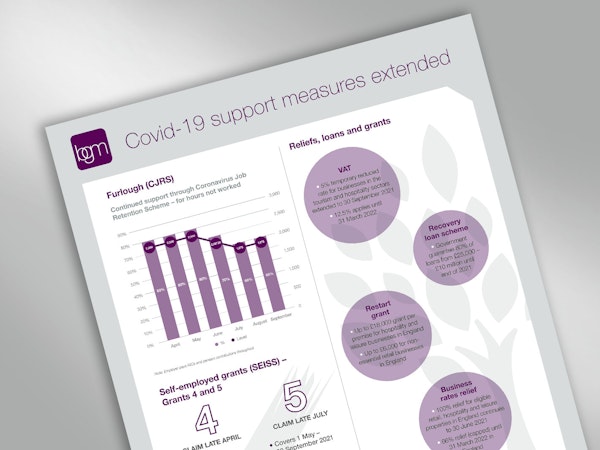Coronavirus Job Retention Scheme (CJRS)
The Coronavirus Job Retention Scheme (CJRS) furlough scheme will now run through to March 2021. The extension of financial support under the CJRS will now run past the original new cut-off of 2 December through to the end of March.

Provision is initially at the same level as that given for August, with employees receiving 80% of their salary for hours not worked, capped at £2,500 a month. Employers must cover National Insurance contributions (NICs) and workplace pension costs.
The two new job support schemes (JSS Closed and JSS Open) set out in the Chancellor’s largely abandoned Winter Economy Plan will now not take effect, if at all, until the furlough scheme ends.
Differences
One important difference from the previous furlough scheme is that claims can be made for employees notified to HMRC with a real time information (RTI) submission by 30 October. Otherwise, the extension is similar to the old scheme:
- Employees recently made redundant can be rehired and furloughed if they were employed up to 23 September.
- Businesses will be paid upfront to cover their salary costs, although there will be an initial delay while systems are updated.
- Flexible furloughing is allowed, with the employer paying as normal for hours worked. For hours not worked, the employer can make up the employee’s full pay if they wish.
- Employees can be on any type of contract.
- Hours not worked will be calculated by reference to the usual hours worked by the employee.
- The employer’s furlough claim must be for a minimum period of seven consecutive days.
- Neither the employer nor the employee needs to have used the furlough scheme prior to 1 November.
- Employers can claim from 11 November. Each month’s claims must be made by the 14th of the following month, e.g. November claims must be made by 14 December. For earlier claim periods up to 31 October, the cut-off date remains 30 November.
The extension will be reviewed again in January 2021 to determine whether there is scope to increase employer contributions, depending on economic circumstances.





